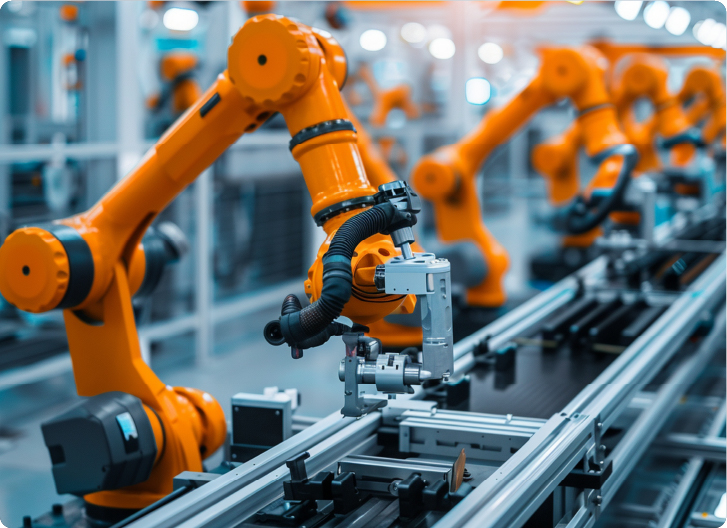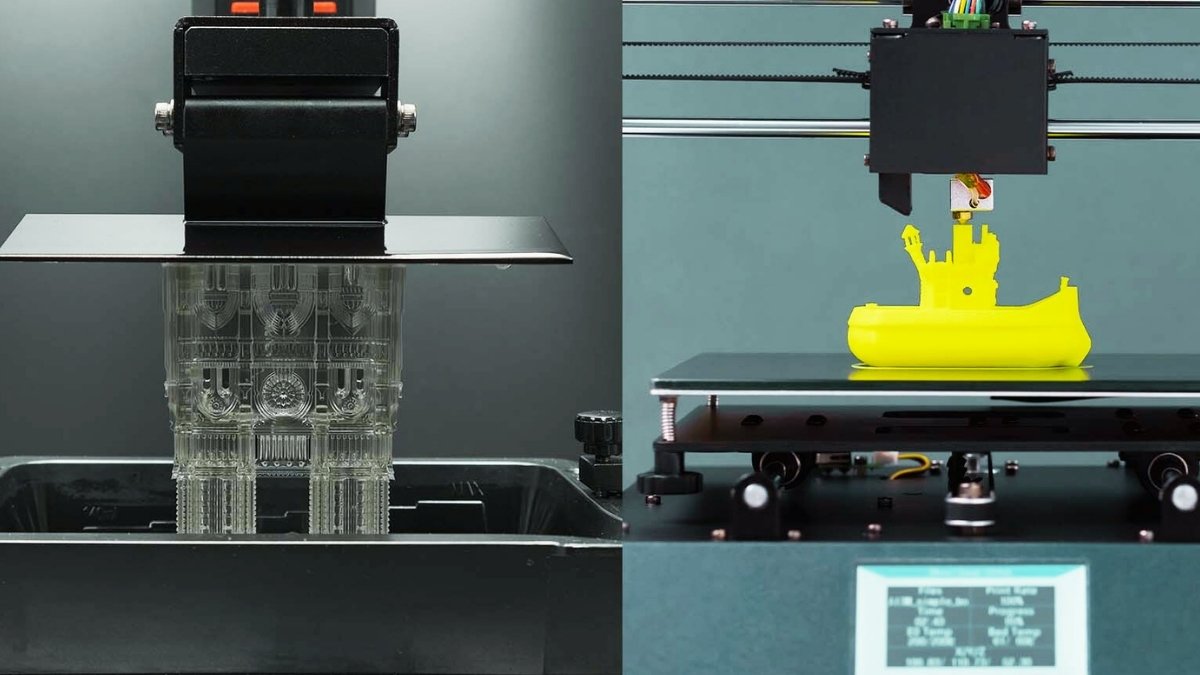
You face this choice more often than you think. Should you go with SLA for precision or FDM? It's not just about the print itself, but it's about the outcome, the cost, and how you plan to use the part. That decision starts long before you hit “print.”
Across industries, engineers are weighing the same question. Product developers, manufacturers, and makers are all in this conversation. SLA is known for its fine details and smooth finishes. FDM brings strength, fast production, and lower costs, and both options dominate today’s 3D printing landscape.
Your decision matters more than ever. The wrong method can waste hours or kill a deadline. But the right one gives you quality, reliability, and control. This guide will help you pick the right path, based on facts, performance, and what truly fits your project.
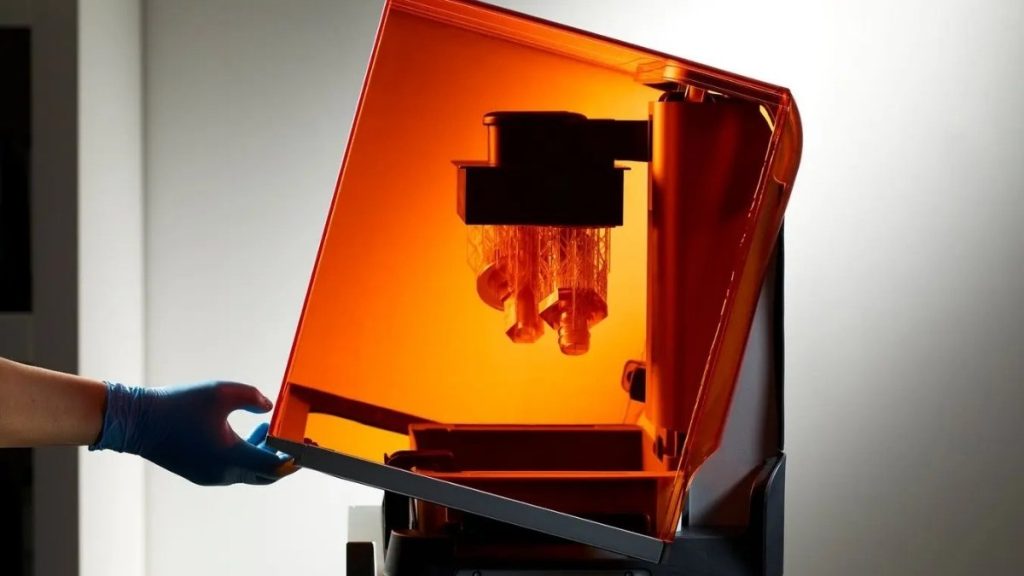
SLA 3D Printing
Stereolithography, known as SLA, represents a resin-based 3D printing technology. The UV laser uses photopolymer resin to solidify liquid layers one by one during the printing process. The model goes into a resin tank where the laser exactly traces each layer. The complete part emerges from the resin as layers are elevated one by one to generate a detailed solid with polished surfaces.
The SLA process operates in manufacturing environments where outstanding details coupled with smooth surfaces constitute critical factors. Designers select SLA for its ability to create outlines supporting features that FDM machine models cannot replicate. The dental field, together with surgical guidance, requires SLA prototyping for its procedures. The production of casting master patterns is a favorite application of jewelry artisans who work with SLA. Engineers depend on SLA technology to produce precise prototypes that serve as prototypes they use for manufacturing purposes.
SLA prints deliver both high functionality along attractive aesthetics. The manufacturing tolerances for these pieces fall within tight ranges, which measure at or better than ±0.1 mm. Prints from SLA feel just like an injection-molded piece while maintaining imperceptible layer lines in their appearance. The main disadvantage of SLA technology involves brittle material characteristics, while necessary post-manufacturing steps include washing and UV curing. SLA stands out as the top selection when precision, alongside superior surface quality, takes precedence over mechanical strength.
SLA delivers the highest degree of precision in the 3D printing process. The technology produces refined structures, including thin threads and small holes, and precise corners with excellent precision. SLA delivers perfection in detail printing by capturing every aspect of your design, including minimal design details that FDM would disregard.

SLA Printed Parts
Due to its specific nature, SLA enables you to fabricate perfectly smooth components immediately from the printing device. The printing method of SLA produces smooth surfaces, as the finished prints do not show the standard layer line marks that FDM tends to generate. Your product becomes ideal for professional finishes or casting and molding processes when you choose SLA because it does not require post-printing sanding.
The major strength of SLA technology emerges from its capability to print intricate three-dimensional structures. Through SLA technology, you can develop overhangs and create thin walls together with internal cavities, which proves difficult for alternative methods of production. SLA provides precise printing results for all delicate or intricate design elements.
The selection of parts that must fit perfectly should be handled through SLA technology. The dimensional precision of SLA reaches up to 0.1mm accuracy levels. SLA consistently delivers component accuracy when building prototypes for assembly testing, as well as high-precision tools that need to meet specific requirements.
The stereolithographic process serves dual purposes, which include physical prototyping as well as small-scale manufacturing. Producing precise small-sized components through SLA technology eliminates both time and monetary costs. Quick iterations along with personalization become feasible due to the absence of molds during SLA printing.
Products made by SLA printing machines have lower strength than similar items from FDM or other methods. The resin materials in SLA systems produce strong components, although they do not survive mechanical pressure or heavyweight loads. SLA printing is incompatible with mechanical stress situations where bending needs to be supported.
The completion of an SLA printed project only begins after the printing phase is complete. Washing off residual resin and subjecting the printed part to UV light curing completes the post-printing process. The post-processing operations require a substantial time duration when working with many parts simultaneously. The extended time requirement poses a drawback when speed in production is a priority.
The precision offered by SLA primarily works with photopolymer resins as its main material choice. The material choices available through FDM surpass those available through SLA because FDM offers ABS, PLA, and nylon, alongside many other plastics. Certain applications have restricted property options because of this limitation.
SLA resin has high costs, especially when printing big parts or requiring advanced material performance. SLA becomes an uncompetitive solution for production quantities and budget-focused activities because resin expenses escalate rapidly. Replacing resin tanks regularly requires additional cost, which you need to include when considering SLA production.
SLA stands as the primary technology to produce exact, small, detailed objects. Small features, including delicate threads and tiny holes, and multi-dimensional structures work perfectly due to SLA's capabilities. Dental implants along with miniature mechanical components benefit from SLA because it preserves all design details precisely.
An SLA printer serves prototypes best, which must closely match the final production model. The printer generates pieces with surfaces that are nearly finished and ready for use. The appearance of consumer electronics and jewelry becomes equally important to functionality because SLA provides excellent results in these industries.
SLA stands out for its ability to precisely test prototype designs that need evaluation of dimensions and operational characteristics. The testing of automotive or aerospace components requires assessments for their assembly alignment within these industries. The perfect match between all components becomes possible thanks to SLA, allowing you to detect problems in their early stages.
Whether you need functional high-detail parts in small quantities, SLA is an ideal production method. The low-volume production of products requiring precise details finds SLA to be its optimal solution, particularly for medical and dental applications. Regular production of custom-fit prosthetics and surgical guides through SLA technology happens rapidly and eliminates the necessity of using expensive molds or tooling.
SLA stands out as a top option for creating molds that will later produce castings or items for injection molding applications. You can make accurate and clean molds with low-volume or custom production because of the advanced detail and smooth finish capabilities. The mold precision and structural integrity come from SLA processes that serve all jewelry and custom plastic part manufacturing operations.

FDM 3D Printing
FDM, or Fused Deposition Modeling, is one of the most commonly used 3D printing technologies. In this process, a thermoplastic material is heated to a semi-liquid state and extruded through a nozzle. The material is deposited layer by layer to build up the part. As each layer cools, it bonds to the layer below it, forming the final object.
FDM stands out due to its basic operation and economical properties. The cost of materials in FDM proves lower than what you find in SLA printing systems. Users can select from different thermoplastics, including PLA, ABS, and PETG, to print functional end products and prototypes with FDM. The printing process of FDM works as an available and versatile option.
FDM produces resilient products; however, it lacks the same level of detail delivery as SLA. Parts requiring resistance against mechanical stress, along with heat and normal wear, require this method as their first choice. The technology enables the production of functional parts suitable for the automotive and aerospace, and engineering sectors due to its low-cost operation and quick manufacturing capacity.
The FDM technology represents one of the least expensive methods to create three-dimensional items. PLA, alongside ABS and PETG, represents a range of inexpensive materials that can be readily found in the market. FDM stands as a perfect choice for economic projects since it functions well for small production runs and prototyping. Manufacturers who require extensive printing capabilities should select FDM since it offers budget-friendly material expenses.
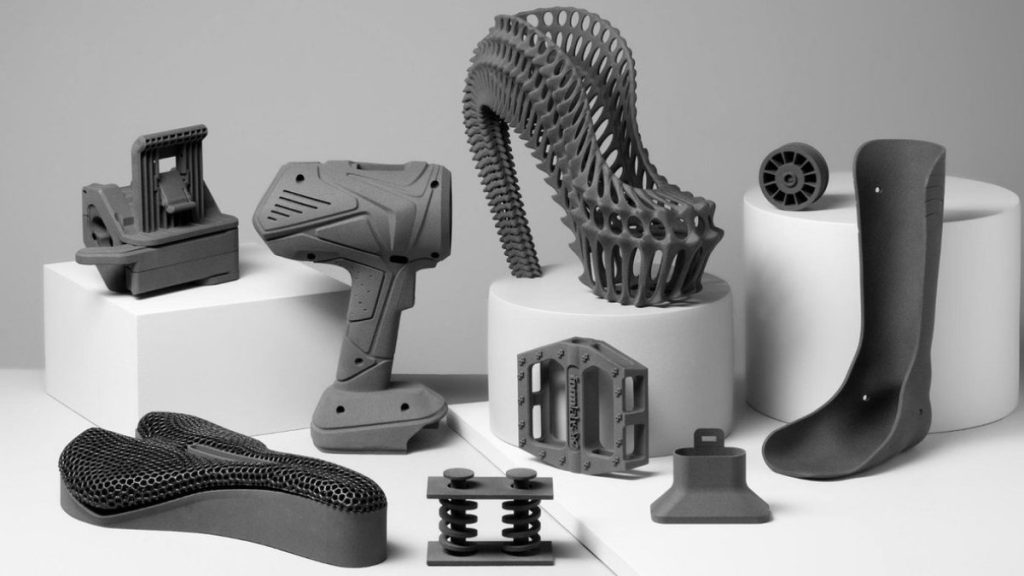
FDM Durable Products
FDM printing provides outstanding performance when it comes to creating strong components. FDM machines utilize thermoplastic materials, particularly ABS, because they offer durability and resistance to impacts. The ability of FDM to create durable parts explains why it remains the most suitable option for components subject to mechanical stress, vibrations, and high temperatures. FDM technology enables the production of functional parts and end-use components that the automotive, aerospace, and tooling sectors commonly utilize.
The production technology of FDM supports various materials that each possesses different characteristics. The FDM printing system permits users to work with multiple plastic materials, spanning from elastic to sturdy and heat-resistant types. Because of its wide material selection, you can easily pick the materials that exactly match your project needs. The process of FDM provides solutions for any stiffness requirement alongside flexibility needs and requirements for chemical resistance.
FDM printers speed up production times when users work under time constraints. FDM demonstrates exceptional speed for rapid prototyping, along with quick iterative testing that enables multiple design evaluations per short period. FDM prints items faster than SLA or SLS approaches, thus making it attractive for quick production requirements.
The dimension options for FDM printers span from small to large, where the larger versions produce big parts during a single printing process. The advantage of FDM printers extends to producing bigger prototype tools and production components. FDM technology requires just a single print run to complete a task since it does not need extra parts for joining purposes, thus saving time and resources.
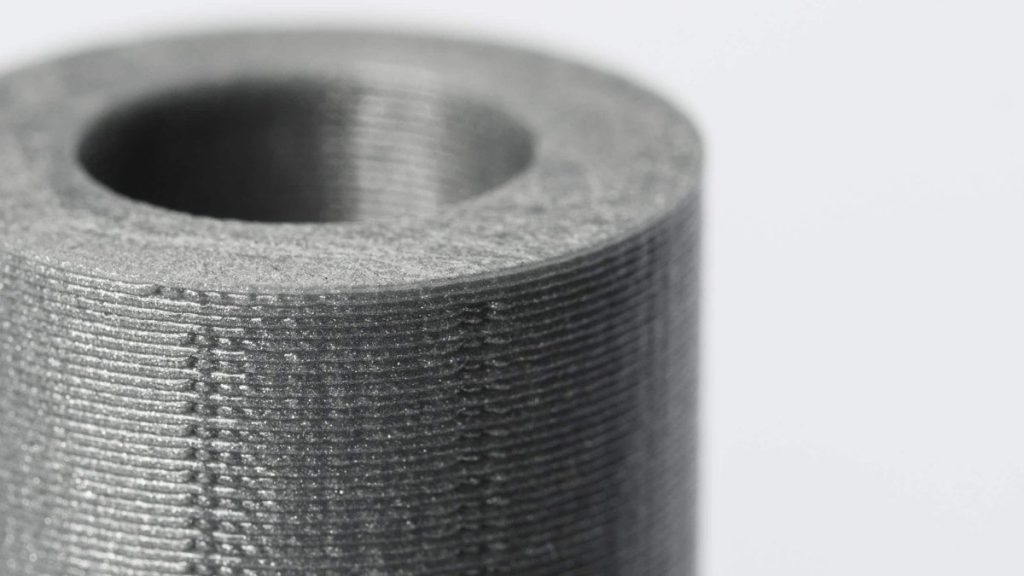
Layers appear in FDM Printing
The layer lines in FDM-printed parts remain visible to the human eye. The visible layer lines become a problem when smooth surfaces or detailed output is necessary. The production of parts for consumer products through FDM technology might require additional post-processing steps to achieve attractive visual results, since the printer leaves visible layer indications.
The materials utilized by FDM printing through ABS and PLA do not match the durability of materials that exist in other 3D printing methods like SLA or SLS. Parts intended for high-stress situations or heat-resistant, or chemical exposure should choose another technology instead of FDM since it fails to provide the necessary performance capabilities. FDM technology produces acceptable results for functional prototypes and basic parts that will not face harsh environmental conditions.
Larger parts printed with ABS material along with FDM technology tend to warp because of their dimension scale and the material characteristics. During cooling, the material tends to shrink, which leads to bending or cracking of the parts. The resulting inaccuracies, along with material waste, become common issues in this process. Adding heated beds or enclosures to mitigate warping problems makes this manufacturing process longer and more complicated.
Most FDM-printed objects need additional finishing processes to achieve optimal appearance quality. Removing support elements from your print, followed by sanding and possibly applications of paint finish, will be necessary. Additional processing steps needed after FDM printing generate extra time and expense since they affect large quantities of output.
The production of complex or detailed shapes should avoid using FDM technology because it results in suboptimal outcomes. Internal features in your design, along with overhangs, will require additional support structures that reduce the part's strength and extend printing time. The production of complex designs works better with SLA or SLS systems for achieving accurate results with precise details.
Budget-conscious organizations should choose FDM technology for making prototypes. The materials used in FDM come at affordable prices, while the printing operations happen rapidly. The FDM system enables fast product development cycles through budget-friendly operations, which serve functional prototype creation as well as novel design assessment.
The FDM system creates operational components effectively, though it lacks precision and structural strength for such applications. FDM technology represents an economical solution when you need to create a small series of custom fixtures and end-use components. ABS thermoplastic printing capabilities of FDM systems make them ideal for applications under low-stress situations that demand standard material performance.
Need parts fast? The print duration of FDM technology surpasses alternative 3D printing approaches, particularly for creating large dimensions. FDM systems enable quick part production, which speeds up decision processes or manufacturing workflows because they deliver components quickly when deadlines constrain your schedule.
FDM plays a crucial role in printing bigger items because of its wide use in manufacturing. The majority of FDM printing machines provide different build areas that extend to handle extensive industrial parts or products. Large-scale prototypes and tools need an ideal manufacturing solution, which FDM provides to the automotive and aerospace industries.
FDM represents a suitable solution for designing products with basic structures and minimal internal components, and simple details. FDM works best with non-precision parts while avoiding complex shapes. Simple mechanical parts, together with housing prototypes and basic-shaped models, work well with FDM since they lack advanced details, which require minimum finishing and delicate features.
When it comes to 3D printing, choosing the right method—SLA or FDM—depends largely on what you're trying to achieve. SLA printing is ideal for parts requiring high detail, smooth finishes, and intricate designs, making it perfect for industries like jewelry, dental, and high-end prototyping. However, it’s not without its downsides: material brittleness, longer post-processing, and higher costs can limit its practicality for large-scale or functional applications.
On the other hand, FDM printing shines with its cost-effectiveness, wide material options, and ability to produce functional parts quickly. It’s the go-to choice for rapid prototyping, large parts, and low-to-medium volume production, where the main priorities are speed and durability over absolute precision. But FDM comes with limitations, such as visible layer lines and material strength concerns, especially for more complex designs or high-performance parts.
In the end, your decision boils down to specific needs: If you prioritize detail and surface finish, go with SLA. If you need functional, budget-friendly parts in a hurry, FDM is your best bet. Understanding the strengths and limitations of both methods ensures you get the right results for your unique project.
